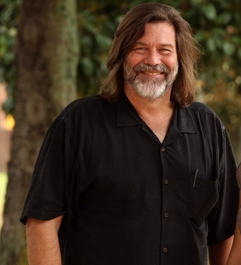Hidden in Plain Sight
An interview with Professor Rick Gressard was part of the cover story entitled Hidden in Plain Sight by Laurie Meyers of February’s issue of Counseling Today and CT Online. Following is the portion including Dr. Gressard’s interview.
Intervening on campus
Addiction treatment isn’t the only thing that has changed in the field; the diagnosis of substance abuse has changed as well. The fifth edition of the Diagnostic and Statistical Manual of Mental Disorders (DSM-5) has combined the DSM-IV categories of substance abuse and substance dependence into a single disorder measured on a continuum from mild to severe. As a fact sheet published by the American Psychiatric Association notes, “In DSM-IV, the distinction between abuse and dependence was based on the concept of abuse as a mild or early phase and dependence as the more severe manifestation. In practice, the abuse criteria were sometimes quite severe. The revised substance use disorder, a single diagnosis, will better match the symptoms that patients experience.”
This new diagnosis range fits nicely with what ACA member Rick Gressard is trying to do at the College of William & Mary with the New Leaf Clinic. Gressard and his colleague Sara Scott created the student substance abuse clinic to provide counseling services to students and a place for counselors-in-training to get hands-on experience with addiction treatment. Gressard, Scott and the college view the clinic as playing a crucial role in the prevention of future, more serious substance abuse problems.
New Leaf Clinic operates in conjunction with the Office of Student Affairs and is part of the disciplinary system at the college. The clinic is open to any student who wants to come in voluntarily for counseling, but all students at the college who incur an alcohol or substance use infraction, such as being drunk in public, destroying property, or possessing marijuana or another illicit substance, are required to visit the clinic. Depending on the infraction, the student faces three different levels of intervention, all of which are nonconfrontational, nonjudgmental and focused on harm reduction, Gressard says.
 The first level consists of required attendance at a single psychoeducational session. “We take the approach that people are seeking a high from alcohol, and they think more is better,” Gressard says. “But we try to help them see that high levels really bring problems, and you actually don’t feel better but worse.”
The first level consists of required attendance at a single psychoeducational session. “We take the approach that people are seeking a high from alcohol, and they think more is better,” Gressard says. “But we try to help them see that high levels really bring problems, and you actually don’t feel better but worse.”
The session covers topics such as binge drinking and the increased likelihood that students will experience negative consequences such as being arrested, passing out, getting injured, getting into fights, having a sexual experience they regret, being sexually assaulted or otherwise harmed, or ending up in the hospital because of an overdose the more frequently they engage in the behavior. “It’s become a cliché — college students falling off balconies — but we see a lot of those kinds of accidents,” Gressard says. “These are the kinds of problems we are hoping to help them avoid.”
The second level of intervention consists of two sessions. In the first, students fill out a survey on their patterns of drinking and substance use, receive additional psychoeducation and are asked to track their use over the course of the next week. During the second session, students receive an assessment of their drinking or substance use habits based on the survey they completed in session one. The survey was designed specifically for William & Mary and uses data provided by the school’s students so that respondents can compare their drinking and substance use habits against the habits of peers. The student and the counselor-in-training then discuss the assessment, the student’s feelings about the assessment and any concerns or questions.
The third level of intervention involves a minimum of six individual sessions. Students at this level also take an initial assessment during the first session. The remaining sessions are dedicated to individual counseling using motivational interviewing.
According to Gressard, the intervention program has been surprisingly successful in reducing harm to students and helping those who are grappling with more serious forms of substance abuse.
Intertwining issues
One of the most substantial complicating factors in addiction treatment is the prevalence of comorbid or co-occurring disorders. According to the SAMHSA survey estimates, out of the more than 20 million Americans with a substance abuse problem and the nearly 44 million Americans who have some form of mental illness, 8.4 million people have both. Many professionals who treat addiction believe the incidence of comorbidity is actually much higher. Brooks thinks the comorbidity rate continues to rise with the field’s increasing awareness of co-occurring disorders. In other words, addiction and other mental health issues have always been intertwined; professionals in the field are just getting better at recognizing it.
In Gressard’s experience, where there is substance abuse, there are often other mental health problems. He notes that the epidemiology has shown that those with substance abuse disorders are twice as likely to have other mental health problems and vice versa.
You may contact Rick Gressard at cfgres@wm.edu.
Laurie Meyers is the senior writer for Counseling Today. Contact her at lmeyers@counseling.org.